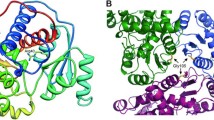Abstract
The ornithine transcarbamylase (OTC) gene is located on the short arm of the X-chromosome and encodes the second enzyme of the urea cycle. OTC deficiency is an X-linked disorder that causes hyperammonemia leading to brain damage, mental retardation and death. The clinical and biochemical phenotype is extremely variable and can only partially be explained by the genotype. We identified mutations in the OTC gene of more than 150 patients with OTC deficiency. The “neonatal onset” group of patients has mutations that abolish enzyme activity, whereas the “late onset group” shows partial enzyme deficiency to variable degree. Of the mutations, 60% are associated exclusively with acute neonatal hyperammonemic coma while the remaining cause “late onset” disease. Several symptomatic and asymptomatic adults have now been identified to have deleterious mutations in the OTC gene leading to predisposition to hyperammonemia.
Conclusion The enlarging clinical, biochemical and molecular spectrum observed in patients with ornithine transcarbamylase deficiency suggests that this disorder behaves like a single gene disorder at one end of the spectrum and as a multi-factorial disease at the other.
Similar content being viewed by others
Author information
Authors and Affiliations
Rights and permissions
About this article
Cite this article
Tuchman, M., McCullough, B. & Yudkoff, M. The molecular basis of ornithine transcarbamylase deficiency. Eur J Pediatr 159 (Suppl 3), S196–S198 (2000). https://doi.org/10.1007/PL00014402
Issue Date:
DOI: https://doi.org/10.1007/PL00014402




